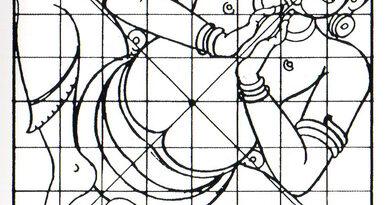Brahmāstra: Part One – Shiva
Brahmāstra: Part One – Shiva: Unraveling the Mystical Epic of Love and Power
Introduction
In the heart of mystical legends and ancient lore, there lies a saga that transcends time and space—the tale of Brahmāstra: Part One – Shiva. A cinematic masterpiece that weaves together elements of mythology, magic, and modernity, Brahmāstra promises to transport audiences into a realm where the lines between reality and myth blur, and the very essence of the universe is at stake. In this article, we embark on a journey deep into the realms of Brahmāstra, exploring its roots in Hindu mythology, the enigmatic characters it portrays, and the anticipation surrounding its release as a monumental cinematic experience.
Brahmāstra: A Glimpse into Hindu Mythology
At its core, Brahmāstra draws inspiration from Hindu mythology, tapping into the ancient scriptures and epics that have shaped the spiritual and cultural landscape of India for millennia. The term “Brahmāstra” itself refers to a potent supernatural weapon in Hindu mythology, associated with the creator god Brahma. According to legend, the Brahmāstra had the power to unleash catastrophic destruction upon the world, emphasizing the significance of its name in the context of the film’s narrative.
The Characters: Shiva, Sati, and the Cosmic Dance
Central to Brahmāstra’s narrative is the enigmatic character of Shiva, one of the principal deities in Hinduism and a symbol of destruction and transformation. Shiva is often depicted performing the cosmic dance, known as the “Tandava,” representing the continuous cycle of creation, preservation, and dissolution. In the film, Shiva is portrayed as a powerful, yet conflicted, figure, torn between his divine responsibilities and the complexities of human emotions.
Sati, Shiva’s consort and an embodiment of divine femininity adds depth to the story. Her character showcases strength, determination, and the enduring power of love, providing a counterbalance to the cosmic forces at play. The relationship between Shiva and Sati becomes a central theme, exploring the dynamics of love, sacrifice, and destiny within the vast cosmic backdrop.
The Quest for the Brahmāstra: Magic, Mystery, and Modernity
As the characters navigate the ancient world of gods and demons, they embark on a quest for the Brahmāstra, a journey that intertwines the mystical with the modern. The film seamlessly blends elements of magic and mystery, incorporating ancient rituals, supernatural powers, and mythical creatures into a contemporary setting. This fusion of tradition and modernity not only enhances the visual spectacle but also underscores the timeless nature of the epic narrative.
The Cinematic Marvel: Anticipation and Expectations
Brahmāstra: Part One – Shiva has generated immense anticipation among cinephiles and fans of mythology alike. Directed by Ayan Mukerji and produced by Karan Johar, the film boasts a stellar cast, including Ranbir Kapoor as Shiva, Alia Bhatt as Sati, and Amitabh Bachchan in a pivotal role. The collaboration of these talented artists, combined with the film’s visionary storytelling and visual effects, promises an unparalleled cinematic experience.
The expectations surrounding Brahmāstra are not merely based on its star-studded cast or cutting-edge technology; they stem from the film’s ambitious endeavor to bring ancient mythology to life on the silver screen. As audiences eagerly await the film’s release, the anticipation reflects a collective curiosity about how the film will interpret the timeless themes of love, power, and destiny within the framework of Hindu mythology.
The Cultural Significance: Mythology in Modern Times
Brahmāstra’s exploration of Hindu mythology in a contemporary context holds cultural significance beyond the realms of entertainment. In an era where ancient wisdom and spirituality are increasingly valued, the film provides a unique opportunity to engage with the rich tapestry of Hindu mythology. It serves as a bridge between the past and the present, inviting viewers to delve into the depths of ancient lore while reflecting on its relevance in the modern world.
Conclusion: Brahmāstra – A Cinematic Odyssey of Love and Power
Brahmāstra: Part One – Shiva emerges as more than just a film; it is an odyssey into the mystical realms of love, power, and destiny. Through its characters, it delves into the complexities of human emotions, exploring the eternal dance between creation and destruction, love and sacrifice. As the film prepares to unfold its epic narrative on the big screen, it beckons audiences to immerse themselves in a world where gods and mortals coexist, and the boundaries between mythology and reality fade away. In the heart of Brahmāstra’s cosmic dance, viewers will find not only a visual spectacle but also a profound reflection on the timeless themes that bind humanity to the cosmic forces of the universe. With every frame, Brahmāstra invites us to witness the magic, mystery, and magnificence of an epic tale—one that promises to leave an indelible mark on the annals of cinematic history.


